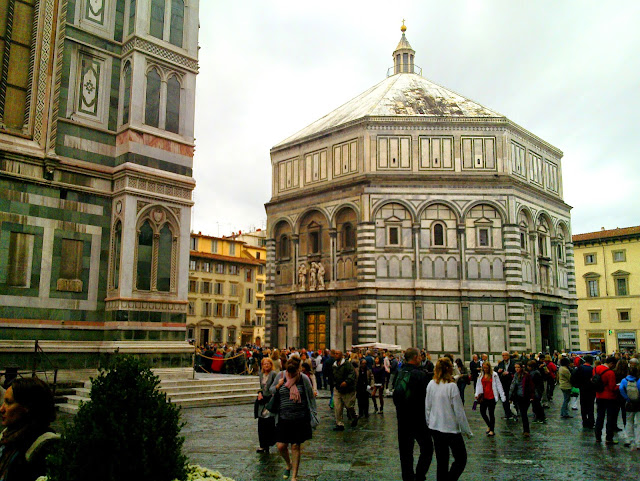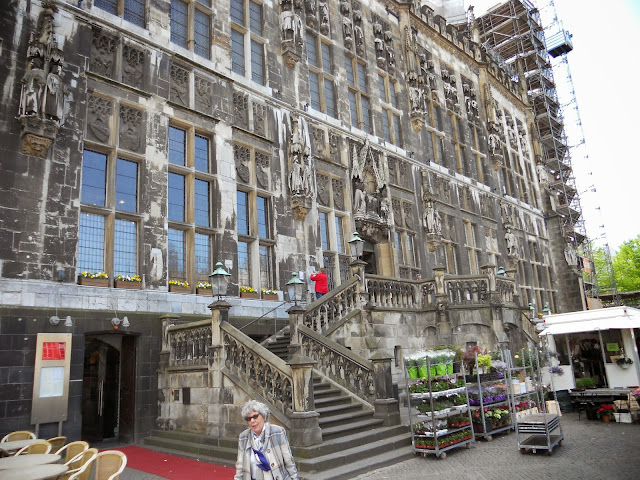Probably, Florence Baptistery (Baptistery of Saint John) is oldest building in the Florence. During a long time the citizens of Florence had believed that this building has been built in the 1 century BC and was a Temple of Mars before it was converted into the Christian Church.
It is generally accepted that Florence Baptistery has been built over the ancient structure, probably the big roman house of the first century. There is also a big probability that ancient marble columns of Baptistery were brought here from the Florence’s Capitol.
First time Florence Baptistery appeared in the documents in the 897. It was mentioned as the city’s Cathedral. Many of its decorations are dated between 1059 and 1128, when it has been reconstructed and refurbished. The decoration of Florence Baptistery was ordered and paid by the Merchant Guild (Arta di Calimala) which in medieval Florence was responsible for keeping it in the good conditions.
Also it’s worth mentioning that in Baptistery (not the Florence’s Cathedral) are kept most valuable examples of medieval art in Florence, including magnificent murals.
One of the most attractive things of the Baptistery - it’s its doors. First appeared south doors which were made by designs of Antonio Pisano. Before he has been hired to this job, Antonio finished the similar work in the Pisa and deeply impressed the city’s authorities by it. So they have decided to give this job to him.
Only for a three months Antonio modeled the wax sculptures for the doors, casting of which was entrusted to the Venetian master Leonardo d’Avanzo; in those times Venetians were known in Europe as not surpassed masters of casting. The casting lasted for a six years and final work has been installed in 1336.
By the creation of the north doors the city’s authorities hoped to avert the epidemic of “Black Death” from Florence. This time the candidate for this job was not obvious and the city’s authorities launched a tender for this job. Among others works they opted the works of two young artists - Lorenzo Ghiberti and Filippo Brunelleschi and proposed them coherent work. But Brunelleschi had relinquished the proposal; he went to Rome instead and studied the art of architecture.
Next twenty years of his life Ghiberti devoted for the work under the north doors. As result, artistic masterpiece appeared which consisted from 28 panels with reliefs.
Arta di Calimala was very impressed by the work of Ghiberti. Soon after he finished the north doors they ordered him to design and develop east doors. And Ghiberti created one of the best masterpieces of the Renaissance. Later Michelangelo said that these doors are “Gates of Paradise”.
It’s worth mentioning that original Ghiberti’s doors are kept in the Museum of Cathedral. In the 20 century they have been replaced by the copy. It’s not propogated information so you have a great chance to see it alone.
















































._%C3%81bside.jpg)






